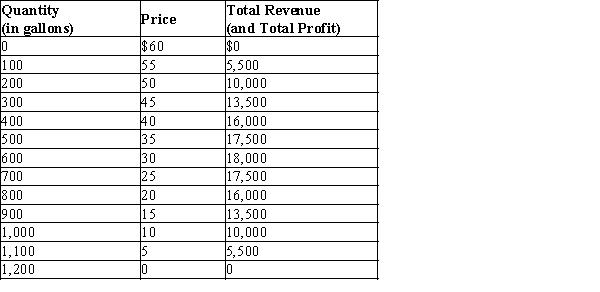Table 17-1
Imagine a small town in which only two residents, Rochelle and Alec, own wells that produce safe drinking water. Each week Rochelle and Alec work together to decide how many gallons of water to pump. They bring the water to town and sell it at whatever price the market will bear. To keep things simple, suppose that Rochelle and Alec can pump as much water as they want without cost so that the marginal cost of water equals zero. The town's weekly demand schedule and total revenue schedule for water is shown in the table below: 
-Refer to Table 17-1. If this market for water were perfectly competitive instead of monopolistic, what price would be charged?
Definitions:
Diversity and Inclusion Training
Educational programs aimed at raising awareness and fostering an environment that embraces diverse backgrounds, perspectives, and ways of thinking within an organization.
Employee Development Strategy
A plan implemented by an organization to improve employee skills, capabilities, and knowledge, aiming to enhance individual and organizational performance.
Cost-effectiveness
A measure of the efficiency of a product, service, or process, in achieving the desired outcome at minimal expense.
Training Technique
Methods or strategies employed in developing individuals' skills and knowledge, aimed at improving performance in their current or future roles.
Q85: Refer to Table 18-12. Let Q represent
Q120: Refer to Table 18-A. The price of
Q229: Antitrust laws tend to target restraint of
Q246: Which of the following statements is true?<br>A)The
Q393: Refer to Table 18-6. What is the
Q447: The primary purpose of antitrust legislation is
Q503: Refer to Table 18-7. What is the
Q521: Refer to Table 17-27. Pursuing its own
Q589: A firm in a monopolistically competitive market
Q638: When a market is monopolistically competitive, the